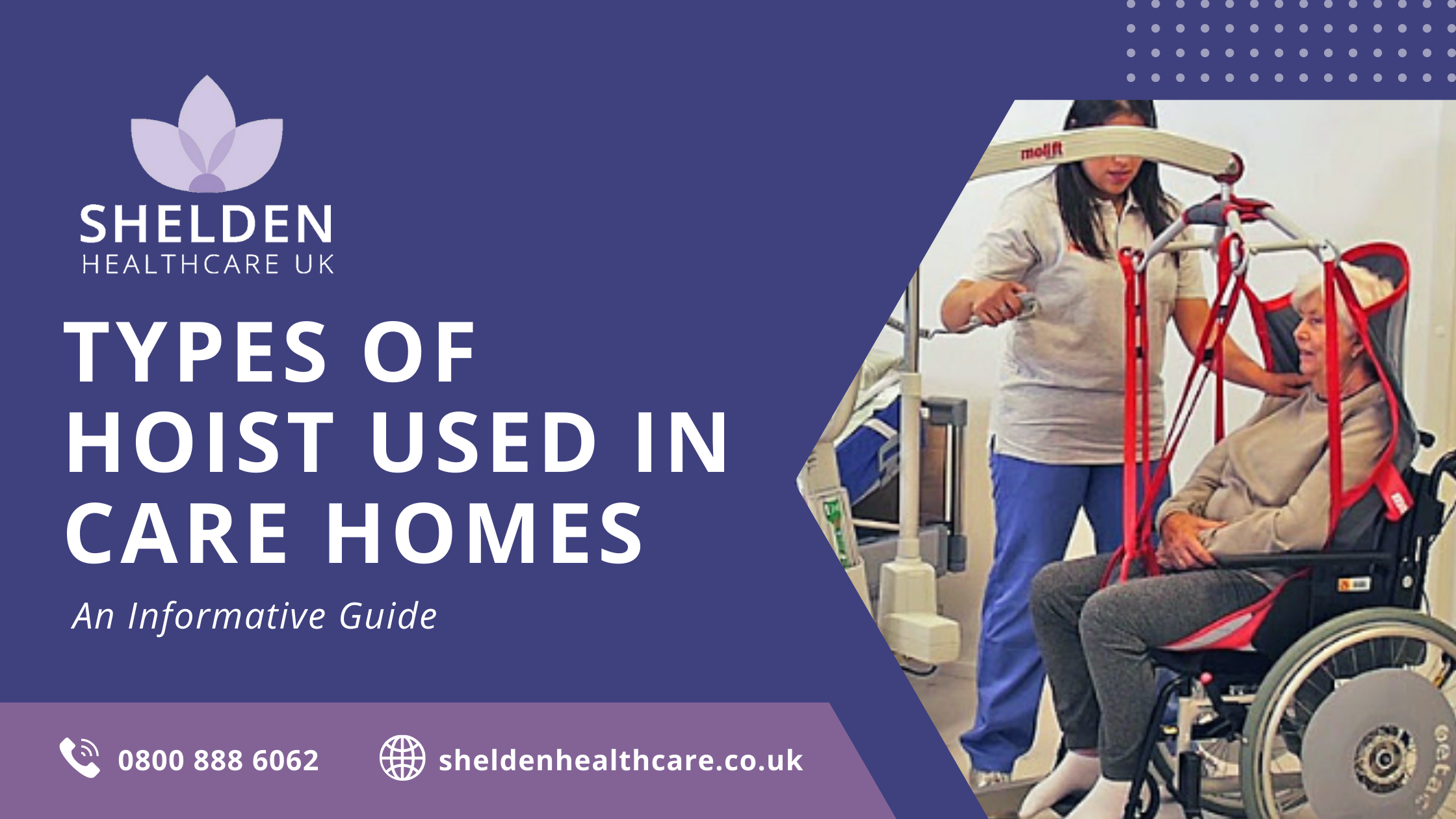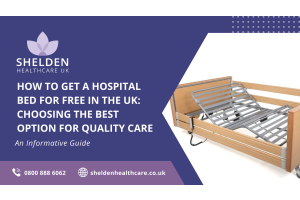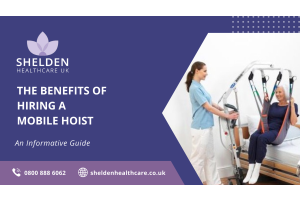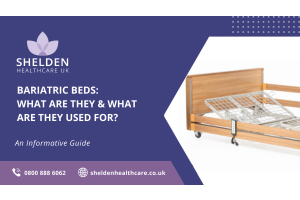Types of Hoist Used In Care Homes

Hoists are a type of assistance that can make people move quickly from one place to another in the hospital or at home. The hoist allows for more mobility and more independence for disabled people in the comfort of their own homes. Continue reading to see different types of hoists and what they do.
What are Hoists Used for?
Well, hoists are mainly used for health and social care purposes. It's a device that lifts the patient from a seated position to another spot - such as the shower chair, chair, or bed. Particular hoists can even carry the patients and perform various lifting operations.
They exist in two main varieties, manual hoists, and powered hoists. Manual hoists have a significant advantage of being easily transportable, along with the generally lower price than a stationary hoist.
However, manual hoists often experience damage and regular wear and tear from constant use, and they can be relatively tricky to use. That being said, powered hoists usually come with a more expensive price tag than the manual variety.
Powered hoists need to have an energy source they get the energy from, such as a socket or battery.
Hoists are always associated with versatility, and their goal is to help people out in many different situations. In health care, hoists are extremely useful to the medical staff, as they allow the team to move the patient without causing the patient much discomfort or pain. Hoists make bathing and moving the patients around the hospital immensely more manageable, and they also serve as lifting equipment.
For regular use, various mobile hoists can be found at public toilets, schools, hospice and care homes, pools, and in the patient's own home to assist carers and patients.
Even though most hoists are relatively easy to use, the carer and the patient need to learn the patient safety training and seek advice before using the electric hoist to avoid healthcare related injuries. Certain patients need complex care, so it's essential to receive suitable training to ensure the patient is completely safe when using the mechanical device.
Types of Hoists
It's important to note that plenty of different hoists perform other operations. There are three main types of hoists used, and they are:
- Ceiling hoists
- Stationary hoists
- Gantry hoists and
- Mobile hoists
Because there are many different types, it's better to consult a professional or a structural engineer to see what kind of hoist might work best to transfer patients. You will need to consider the available space and the floor space to ensure the safety of the patient.
The medical professional should provide you with advice about the best lifting equipment and safety training. Many carers argue that electrically powered hoists take too long to lift the patient to a sitting position, which is why many opt to move the patient independently.
That is why the electric hoists should be picked out carefully, considering the operations and lifting equipment according to the patient's needs. Mobile hoists - used manually, work to reduce the risk of potential injury, not increase said risk.
Mobile Hoists
Mobile hoists, or wheeled hoists, are a type of mechanical device for moving patients, keeping in mind their health and safety. The mobile hoist supports the patient with a harness or a sling system on a wheeled base.
The sling is placed around the patient when the patient is in a lying or sitting position, and the sling lifts the patient and takes the patient to a different spot. The critical part to remember about the mobile patient hoists is the space required for the wheeled hoist.
Most mobile hoists need a wide path to move the patient from one room to another and check out the space under furniture to make space for the hoist frame, keeping in mind the door frames. The wheeled hoists require an unobstructed path to work perfectly. If the mobile hoist also serves as a bath hoist, you will need to raise the bath from the floor to accommodate the hoist frame underneath the tub.
Stationary Hoists
The stationary hoist is probably the simplest form of all stand aids. The stationary hoist cannot be moved, and it's usually fixed on the wall or the floor.
Because the hoist is fixed, the support arm allows the patient to transfer from one place to another. The slings on the stationary hoists are very similar to wheeled hoists, but they are not the best option for spaces with two or more rooms.
If you are thinking about getting a stationary hoist, you need to consider the wall or floor and whether they can support the patient's weight and the hoist. The hoist needs to reach all the places the patient needs to go without any obstructions during the relocation.
Ceiling Hoists
A ceiling track hoist is a type of hoist that moves over the fixed tracks, so ceiling track hoists don't offer the versatility mobile hoists do. However, what makes them better is that they don't require that much space on the floor, along with the most crucial fact - the patient can use them on their own, unlike most hoists out there.
They are also the most suitable option for carers, as they don't require that much energy to complete a transfer. What's more, they work flawlessly for longer transfers, which makes them a perfect option for a residential hoist.
However, they aren't perfect - there are several lifting equipment regulations you must keep in mind. The joists on the ceiling need to be reinforced significantly, and the door frames need to be changed to accommodate the ceiling hoists.
The ceiling lifts can have a fixed hoist or a portable hoist - the latter is a hoist that the carer can take off and carry to use on a different hoist elsewhere. This is a fairly popular choice in care homes. Keep in mind that the ceiling hoist is not lightweight, and it can be challenging to carry, despite it being portable.
The transfer is powered with electricity, but the rising mechanism can be manual or electricity-powered. The rising mechanism can even have a battery for emergencies or a manual option in case of power loss.
The best ceiling hoist holds power in the battery, so you don't have to place a cable down the track systems. However, you must remember to charge the batteries for the ceiling track hoist to work, which is something we all can forget.
Gantry System Hoists
The ceiling hoist is excellent, but if you are looking for more flexibility and portability, the gantry hoist might be the best option. A gantry system is a perfect option for those that need patient hoists in a specific place for a short time.
So, when a disabled person is away from home, the gantry hoist is the best option. The whole hoist is entirely portable, as it can be packed into a wheeled case, taking up little to no space in the car's boot.
How to Use A Hoist Safely?
Before you decide on the best type of patient hoist, be that the ceiling lift or the bath hoist, you must know how to use the hoist safely. Among all the different hoists, one thing comes before all else - the patient's safety.
The first thing you need to ensure is that the sling or the hoist swing is the suitable size. If the size is chosen poorly, the patient could be very uncomfortable in the seat, and if it's too large, you can even risk the patient slipping out.
Another critical thing is to decide on the suitable type of hoist - the mobile hoist may seem like the perfect option for everyone, but that's not always the case. For care homes, the residential hoist usually consists of ceiling lifts.
Then, ensure that the ceiling tracks and the entire system are inspected regularly. The hoist needs to remain stable, so make sure it's checked out twice a year, especially if a family member is a carer for the patient. Risk assessment is key for a longer lift and larger hoists more than the smaller ones.
Another critical point for safety is to never leave a person in the mobile hoist unattended - accidents can happen, and they might not be able to call for help. Moreover, make sure that the patient feels comfortable in the hoist, especially if you are using bath hoists. The sling for the patient has multiple loops, which allow for more comfort and a better range of motion.
Try out different loops to determine whether the patient can slip or move - and make sure you tighten both sides equally. If you fail to do so, the patient can overturn and fall.
OUR RECOMMENDATIONS
All of the recommendations below are designed to meet all types of patients and their requirements. The recommendations include folding hoists for flexibility, larger hoists for bariatric patients and plenty more. Please see below to see which would best suit you or your patient.
Limited mobility hoist – Invacare Reliant RPS 350 Stand Aid Hoist
No mobility hoist – Oxford Midi 180 Electric Mobile Hoist
Space saving hoist – Invacare Birdie Evo Compact Hoist
Budget hoist - Powerlifter Midi Mobile Hoist
Bariatric hoist- Hermes 250kg Bariatric Hoist
Ceiling track hoist- Inavacre Robin Overhead Hoist








